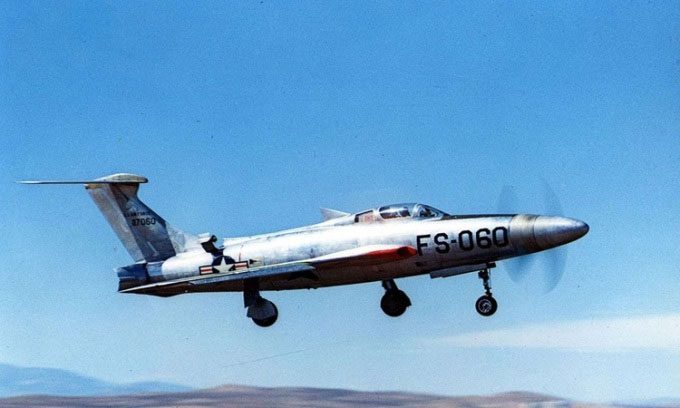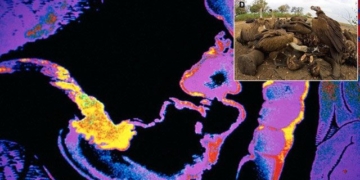The XF-84H aircraft became a nightmare for pilots and air traffic controllers alike, with noise levels detectable from up to 40 kilometers away, earning it the nickname “Thunderscreech.”
In 1955, the U.S. Air Force developed a prototype aircraft called the XF-84H, produced by Republic Aviation. The purpose of the XF-84H was to determine whether a fighter jet could launch directly from an aircraft carrier without a catapult. A turboprop engine was chosen to power the aircraft, as such engines use large propellers to move a significant volume of air, enabling the aircraft to generate greater thrust at lower speeds. More thrust translates to quicker acceleration, thus reducing takeoff time.

XF-84H in the air. (Photo: U.S. Air Force)
The XF-84H was based on the famous F-84 Thunderstreak design, but instead of a jet engine, it was equipped with an Allison XT40-A-1 turboprop engine producing 5,850 horsepower and featuring three steel blades. With a blade diameter of nearly 3.7 meters, the propeller was so long that even at idle thrust, the tip of the blade traveled at supersonic speeds, creating a continuous sonic boom that could be heard from 40 kilometers away. The shockwaves were powerful enough to knock down a grown man.
The terrible noise of the XF-84H led to its nickname “Thunderscreech.” The engine of the Thunderscreech operated at full throttle all the time, with the propeller spinning at 2,100 revolutions per minute. The thrust generated was adjusted by changing the pitch of the blades. The reaction from the propeller was instantaneous, but the noise was unbearable.
Edward von Wolffersdorff, who led the test pilot team including Henry Beaird, feared that the shockwaves from the propeller would shatter the windows of the control tower located about 1.6 kilometers away from the runway. To prevent injuries from shattered glass, whenever the XF-84H was in flight, air traffic controllers would duck under their desks with the radio and cover themselves with blankets. “No one ever really measured the noise level. I think they were afraid the measuring equipment might get damaged,” Beaird recalled.
The XF-84H was not well-received at Edwards Air Force Base, not only due to the noise. The XF-84H was a poorly practical machine, taking half an hour to start and prepare for takeoff, making it unsuitable for combat. In addition to the noise and delays, mechanical issues further tarnished its reputation.
The T40 turboprop engine was a “nightmare machine.” The XF-84H suffered from vibrations caused by the supersonic propeller and the strong torque generated by the engine. Lin Hendrix, one of the test pilots for Republic Aviation, flew the aircraft once and refused to fly it again.
Hank Beaird flew the aircraft 11 times, with 10 of those flights ending in forced landings. Ultimately, no one wanted to be associated with the XF-84H. The U.S. Air Force canceled the project after only two XF-84Hs were built, with a total flight time of less than 10 hours. The XF-84H was reputed to be the fastest propeller-driven aircraft ever made, with a maximum speed of 1,078 km/h, although neither of the two aircraft ever flew faster than 724 km/h.





















































